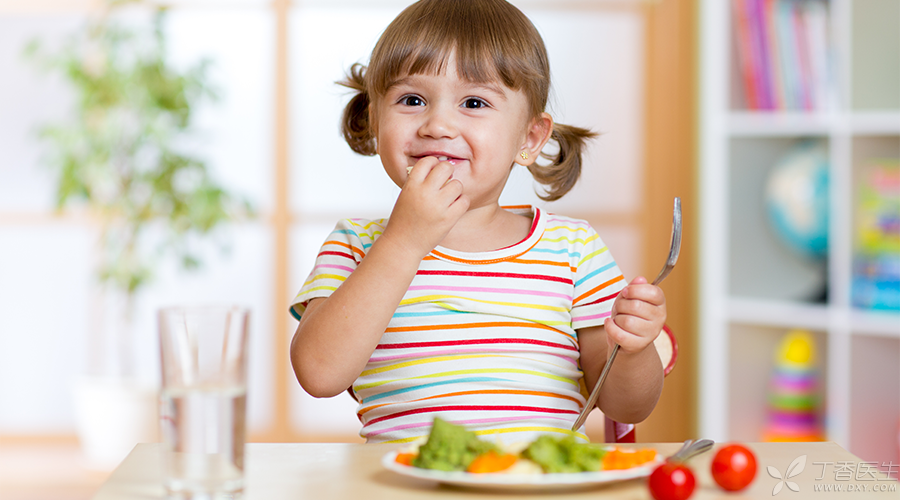
It is said that [life is happy to eat first], eating, as the source of energy for life activities, has always been highly valued.
In particular, babies who are afraid of falling in their palms and melting in their mouths are paying more attention to their diet.
However, it is easy for parents to overexert their care. If they are not careful, they will feed the baby into a small fat mound. On the contrary, they will become a small tree pole.
It is said that the diet is balanced. How can this [balance] be controlled? Let’s follow Dr. Hu Xinhua to understand how 2-5-year-old babies [balance] their meals.
How much food do children aged 2-5 eat every day?
At this stage, children’s metabolism is vigorous and their activity is large. Therefore, the amount of energy and various nutrients required per kilogram of body weight is relatively higher than that of adults.
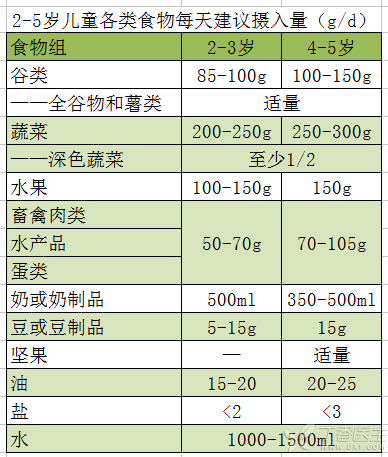
1. Cereals and potatoes.
Children aged 2-5 years old gradually reduce the proportion of milk in their diet and increase carbohydrate foods.
The average carbohydrate requirement for children at this stage is 120 g per day. The recommended dietary carbohydrate energy supply ratio is 50% ~ 65% of the total dietary energy.
2. Vegetables and fruits.
Vegetables and fruits are of great significance to promote the healthy growth of children, maintain normal intestinal function and reduce the risk of long-term potential chronic diseases.
The intake of dark vegetables should account for at least 1/2 of the total intake to provide more vitamins and mineral nutrients.
3. Meat, poultry, fish, eggs, milk, beans.
A balanced and nutritious diet cannot be separated from foods rich in high-quality protein such as meat, poultry, fish, eggs, milk, beans and bean products. The recommended protein intake for children aged 2-5 is 25-30g g.
The main source of protein is milk, followed by eggs, meat, fish, poultry, soybeans and cereals.
Step 4 Oil
The recommended fat energy supply ratio for children aged 2-5 is 20% ~ 30% of the total dietary energy, which is consistent with that of adults, but requires a higher proportion of unsaturated fatty acids.
Therefore, when preparing food for children, more vegetable oil rich in unsaturated fatty acids should be selected, and less oil rich in saturated fatty acids should be selected as far as possible.
Each person should not use more than 1 spoon of oil for cooking each meal.
5. Salt, Sugar, Seasonings
Many research evidences show that salt intake is positively correlated with the risk of hypertension.
The extra sugar added to food does not contain any nutrients except energy, which is called “blank energy”.
Excessive intake of these sugars not only increases the risk of dental caries in children, but also increases the additional energy intake and increases the risk of obesity in childhood and adulthood.
The Chinese Nutrition Society suggests that it is not recommended to add sugar, salt, soy sauce, monosodium glutamate and other seasonings to children’s diet before the age of 2. It is advisable to eat no more than 2 g of salt every day after the age of 2. At this time, parents should begin to cultivate their children’s light taste.
6. Moisture
Children aged 2-5 years old have vigorous metabolism, large amount of activity and large water demand. It is recommended to drink 1000-1500 ml of water every day, including water from porridge, milk and soup and drinking water. Drinking water should be plain boiled water and sugary drinks should be avoided as much as possible.
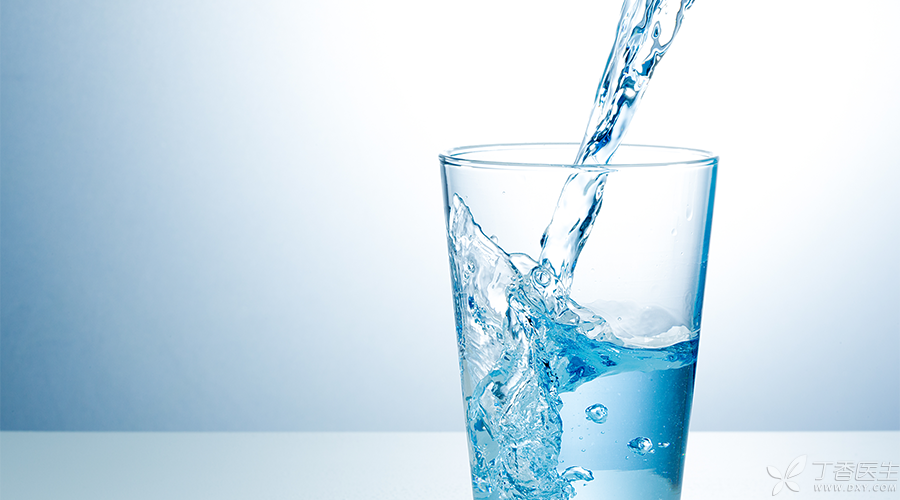
Second, how to prevent the lack of important nutrients?
1. Iron
Iron deficiency can lead to children’s behavior abnormalities, such as poor response to the outside world, irritability, uneasiness, inattention and mental impairment.
Iron-rich foods include animal liver, animal blood, and rich vitamin C in vegetables and fruits can promote iron absorption.
2. Zinc
Children with zinc deficiency often suffer from decreased taste, anorexia, even pica, lethargy, pale complexion, poor resistance and susceptibility to various infectious diseases. Severe cases lead to growth retardation and genital development disorders.
The best food source of zinc is:
- Clams and shellfish: such as oysters and scallops, zinc content and utilization rate are relatively high; Animal livers: mushrooms, nuts and beans; Meat: Red meat is relatively abundant, and eggs also contain a certain amount of zinc.
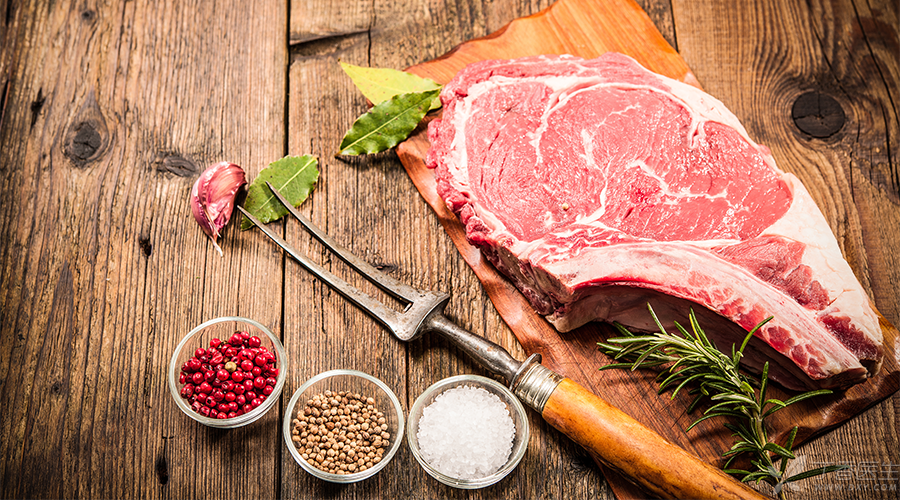
3. Iodine
Iodine deficiency can lead to nervous system differentiation disorder, motor coordination disorder, perceptual dysfunction, mental retardation, slow response, etc.
The best way to supplement iodine is to use iodine fortified salt to cook food. The second is to eat seafood, such as kelp, laver, or marine fish, shrimp and shellfish. It is recommended to arrange seafood at least once a week.
4. Calcium
Calcium is indispensable for bone growth of preschool children.
- Daily milk intake should not be less than 300 ml per day; Beans and bean products, sesame, shrimps, kelp, etc. are also rich in calcium and should be used frequently. Some vegetables, such as spinach and amaranth, are also rich in calcium.
5. Vitamins
Vitamins are very important for children’s growth and development.
- The best sources of vitamin A are retinol in animal liver, fresh milk and egg yolk, and carotenoids in dark green, yellow red and red vegetables and fruits. B vitamins come from a wide range of sources, for example, green vegetables, nuts and bananas are rich in folic acid. Other sources of B vitamins include brown rice, oats, beans, eggs, meat, poultry and fish. Foods rich in vitamin C are mainly fresh green leafy vegetables and citrus fruits.
Three, preschool children’s diet specific arrangements?
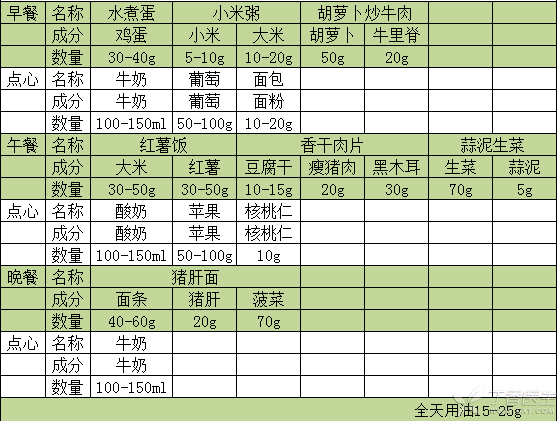
-
Arrange three meals in the morning, middle and evening, and at least two extra meals on this basis, usually one in the morning and one in the afternoon respectively. When the dinner time is earlier, one extra meal can be arranged 2 hours before going to bed.
-
The number of extra meals should be small so as not to affect the eating of the main meal. For extra meals (snacks), choose fresh, natural and digestible food as much as possible.
-
Choose steaming, boiling, simmering and stewing as much as possible, and choose less cooking food such as frying, roasting and frying, and keep the original taste of the food, preferably light.
Balanced diet and scientific diet will enable children to grow up healthily and healthily.
